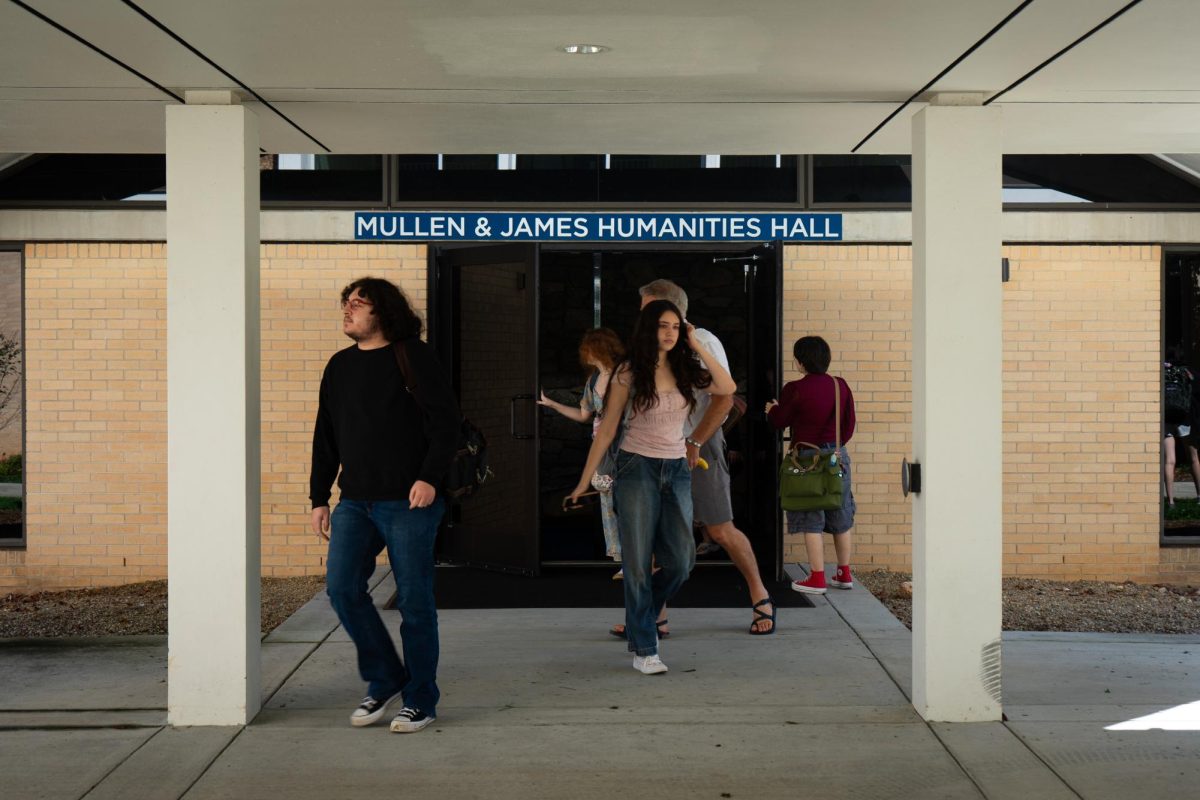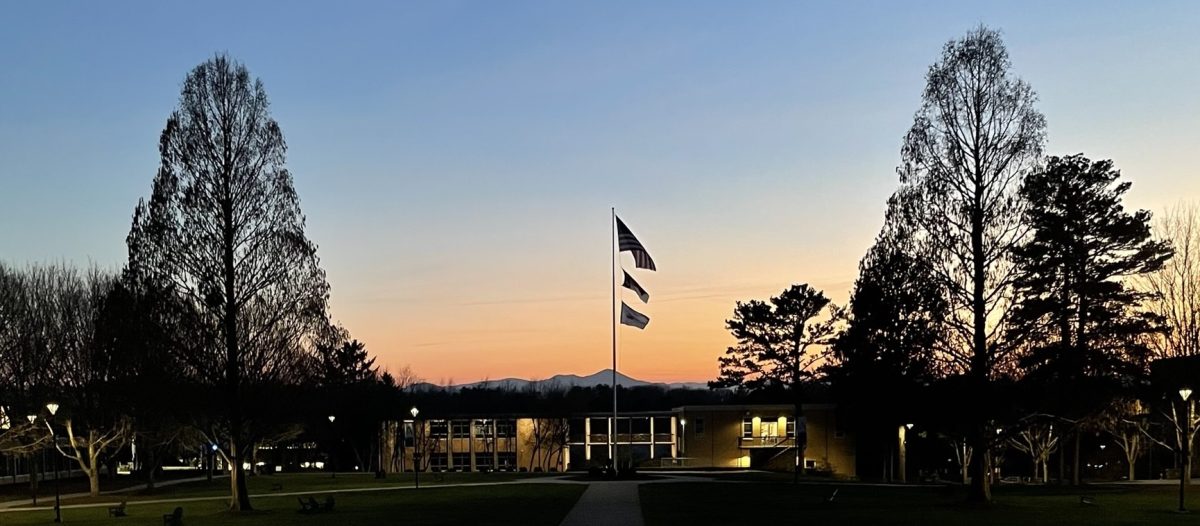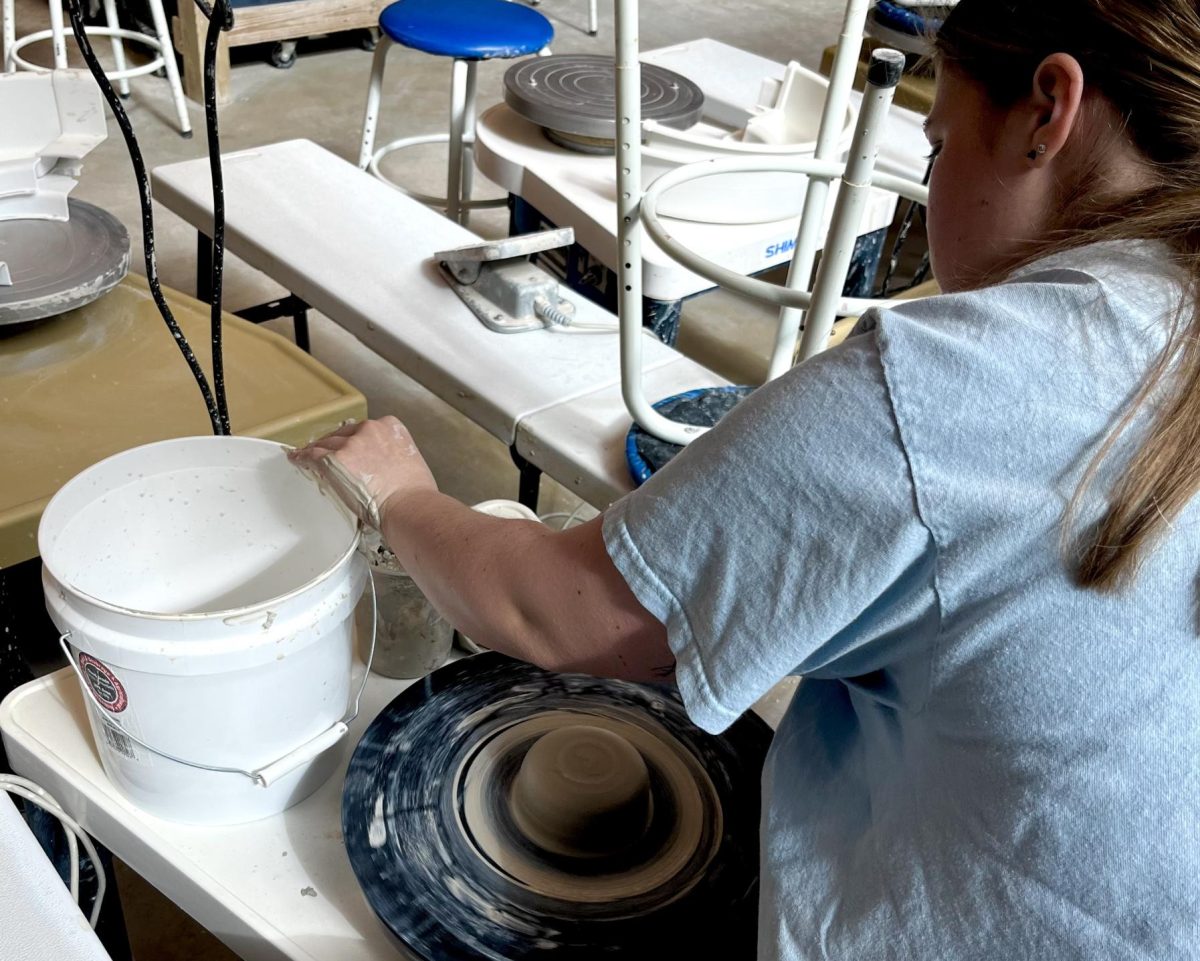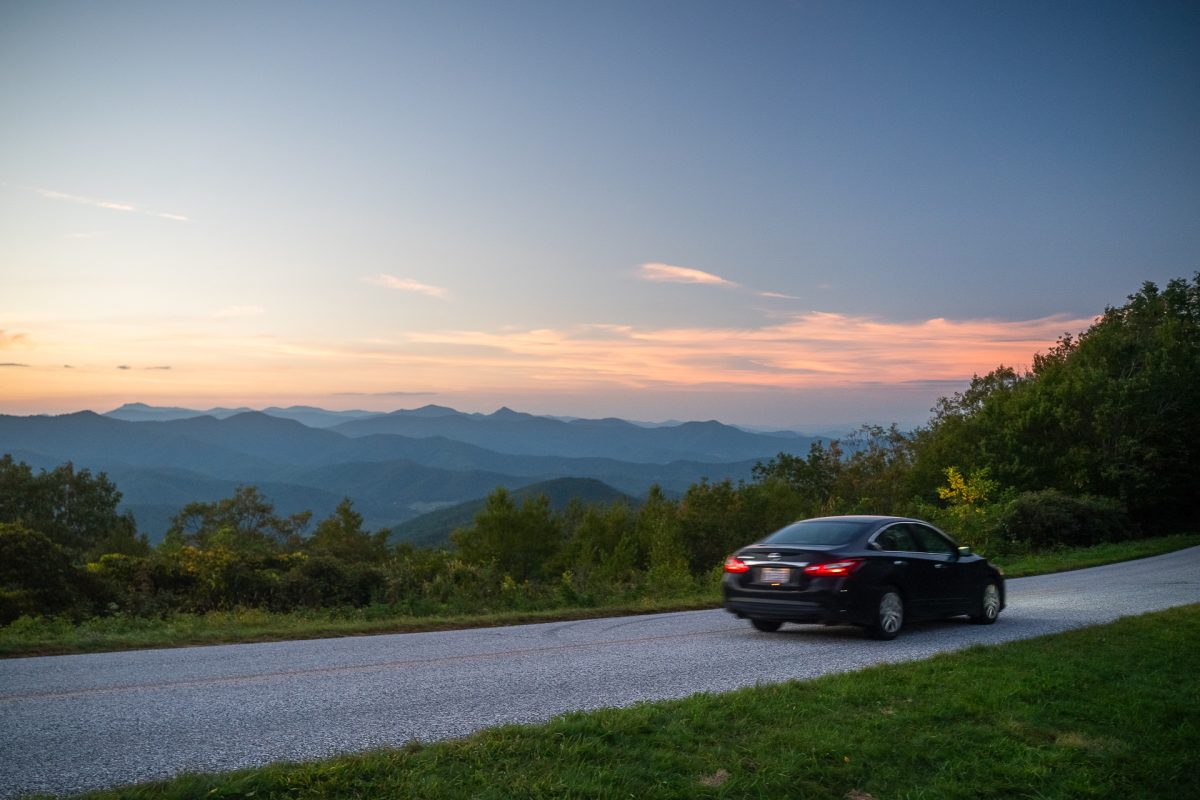The setting is post-apocalyptic. Artwork and trash hang from the branches on the trees that surround Lyman Street and the river. Collapsed buildings and heaps of rubble still line the road. Fifty-foot semi-trailers that were lifted up and moved by floodwater lay in piles by the Asheville Waste Paper Company. Volunteers are walking up and down the greenway picking up debris. This is over two months after Hurricane Helene ripped through the region.
“The first three weeks was just trying to rescue anything of a value or sentimental value to the artist or the antique dealer or the small business that was associated with anything that was found,” said Robert Nicholas, owner of the Marquee. “There’s quite a few things rescued, but we had over 110,000 items in inventory between 300 vendors in there and 90% of it was all lost.”
On Sept. 27, the French Broad River rose to nearly 25 feet in Asheville. Buildings which sat low near the river were submerged by the flood. Asheville’s beloved River Arts District was subjected to indescribable devastation. Some buildings made it through with relatively little damage, while others were wrecked beyond repair. Inside those structures were restaurants, breweries, boutiques, coffee shops, antique shops, and art galleries. In a span of a few hours, business owners and artists of the RAD lost their life’s work.
Foundy Street, a collective of 16 establishments off Lyman Street, was the hardest hit section of the RAD. The area lies just across the road from the river, making it the first target of the flood. The water rose so high that all you could see was the roofs of the buildings. After the waters descended, reality set in. Everything was lost. Nothing was salvageable. Expensive equipment and irreplaceable artwork were tossed around and ruined in the storm. The buildings that weren’t obliterated were subsequently mucked and gutted. All that remains are hollow shells of a once thriving market. Some businesses will close forever, others will move locations, and some will have the resources to stay.
The Marquee, a 50,000 square foot indoor market, was one of the victims on Foundy Street. The Marquee hosted over 240 vendors and showcased art from all over Western North Carolina. Now, the Marquee is an empty skeleton of what it once was. Nicholas isn’t giving up on his business though. He said despite the building being flooded with 15 feet of water, the foundation is still intact, and he is already in the process of rebuilding the Marquee and plans to reopen next summer.
“We’re calling it ‘Marquee 2.0 turned up’. I mean we want it to have the vibe, but we want it to have a little different feel as you walk in,” Nicholas said.
Foundy Street was not the only part of the River Arts District that was deeply affected by Helene. Just across the railroad tracks on Depot Street, many artists and businesses experienced their own substantial loss. Several buildings on Depot Street were flooded with several feet of water, damaging everything on the first floor. Depot street is the home of art studios, galleries, restaurants, coffee shops, and salons.
Depot Street was unrecognizable the week after the storm hit. The streets and buildings were covered with thick layers of dirt and mud. One studio that experienced significant damage was Trackside Studios. Trackside co-founder, Julie Bell, said the floodwaters came up 6 feet into the building.
“Forty of our artists were on the first floor and 20 of them were up on the second, and so those 40 lost pretty much everything, especially because the water is turbulent and splashes, so even if it didn’t raise high, it still splashed mud,” Bell said.
Bell said Trackside Studios reopened last weekend but is still undergoing repairs. She said they have opened more working spaces to make room for other RAD artists who lost their studios in the storm. Bell said the best thing a person can do to support RAD artists is to buy their art or donate to artist and gallery GoFundMe pages.
On the northern end of Depot Street, the businesses fared a little better. Hedy Fischer, co-owner of Pink Dog Creative, said that their buildings had minimal flooding. Pink Dog Creative is a group of studio and retail spaces that is home to places like Vivian and Fresh Pizza.
“So we missed the river rising and the flood from the river by three inches. It literally stopped three inches below the terrace, but because of all the heavy rain before the hurricane, the ground was so saturated that the water literally came in through the block and concrete of the building,” Fischer said. “Because of the wind and rain, we also had roof damage over Vivian and over the Grind coffee shop.”
Vivian, a critically acclaimed restaurant on Depot Street, will not be reopening, even after repairs. Like several other small businesses in the RAD, the financial burden is just too much for them to carry. Fischer said that the other businesses at Pink Dog are either already open or will be reopening soon.
Though many businesses in the RAD are eager to reopen, there is a concern from community members about what will happen if another big storm hits Asheville.
“It’s heartbreaking, sad,” said artist Betty Clark. “Lives were lost, whole lives’ works were wiped out.”
Clark was one of the first five artists who worked in the River Arts District back in the early 1980s. That was when the RAD was simply called “The River Stroll”. RiverLink founder Karen Cragnolin started the River Stroll as a way to bring people into the district to support artists. Clark has seen the growth of the River Arts District from its beginning, but she said she is now concerned over its future.
“It’s going to happen again,” Clark said.
Clark said she is worried that the RAD will suffer another catastrophe if proper measures are not taken by the Asheville city government. She said she hopes the city will consider flood mitigation techniques used in European countries like Sweden.
“In the fall we were in Vienna. Our friend who picked us up at the airport told us ‘That’s not the Danube River to our left that we’re passing by. That is a channel that the Viennese government built for river overflow’,” Fischer said. “So, when the river does flood, it floods into this very deep and long river channel that runs through the entire city and that captures the overflow, so the buildings don’t flood.”
Fischer said she thinks Asheville should also consider flood mitigation to minimize a future natural disaster.
As of now, the future of the River Arts District is unknown. Artists are doing their best to find a way to create again. Their work is the heart of the city. Their passion is its driving force. Their survival is the survival of Asheville.
There are still months of debris clean-up ahead on Lyman Street. Volunteers are working hard to clear out the wreckage, but one heap of rubble is being left untouched. On the side of the road by Foundy Street sits a monument on top of a mountain of concrete blocks. It was erected less than two weeks after the storm and sits there still today. On that pile of ruins stands a smiling metal sculpture carrying two wooded boards with hand-painted writing that says “HOPE… even when the creek rises”. Amidst the unimaginable destruction and chaos, amidst the suffering and loss, there is a sign of hope for the future of the RAD.


![Brooke Pedersen [second from the right] and Luis Reyes [right] hold banners during the Wrap The Woods event.](https://thebluebanner.net/wp-content/uploads/2025/09/ELIZABETH_PRITCHITT_IMG_3470-1200x804.jpg)




















